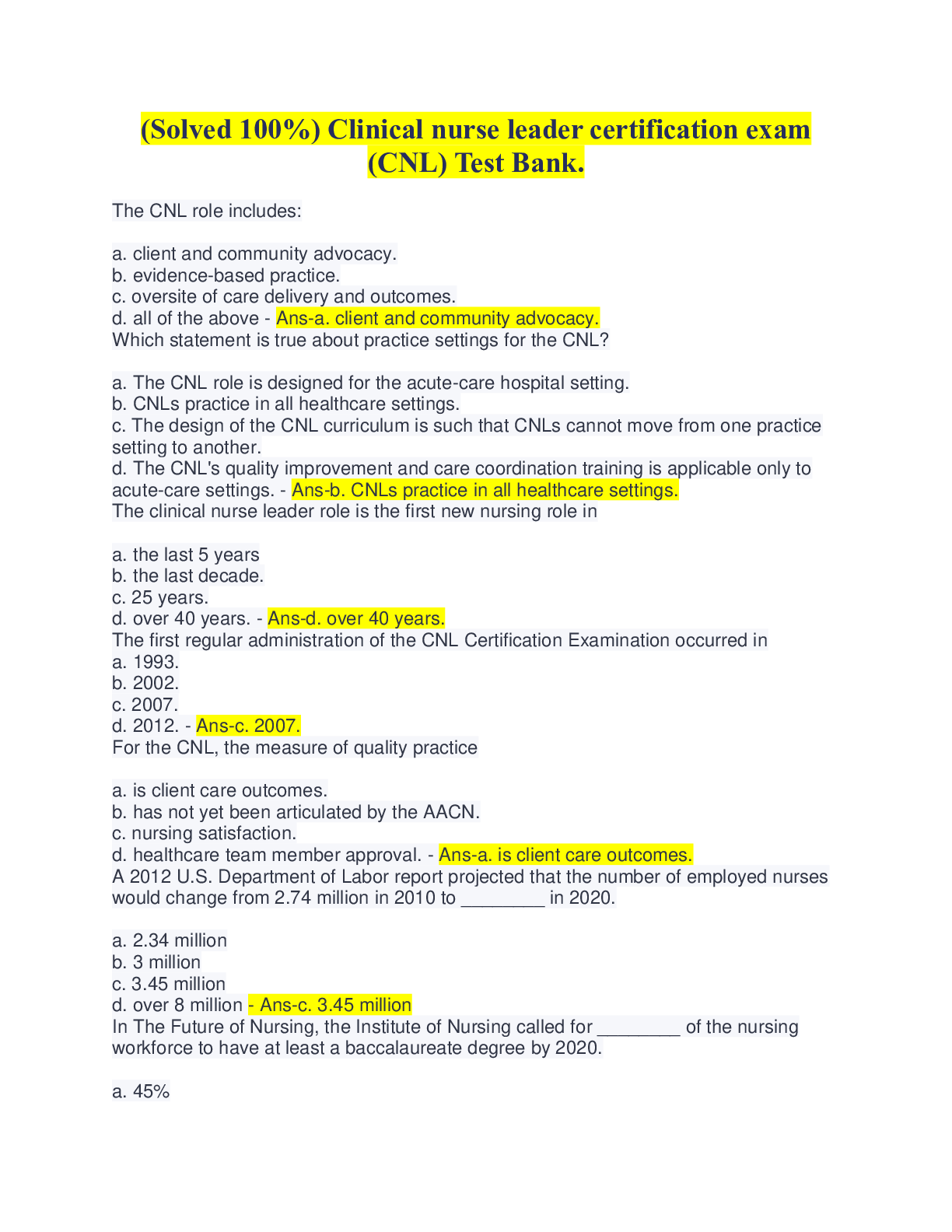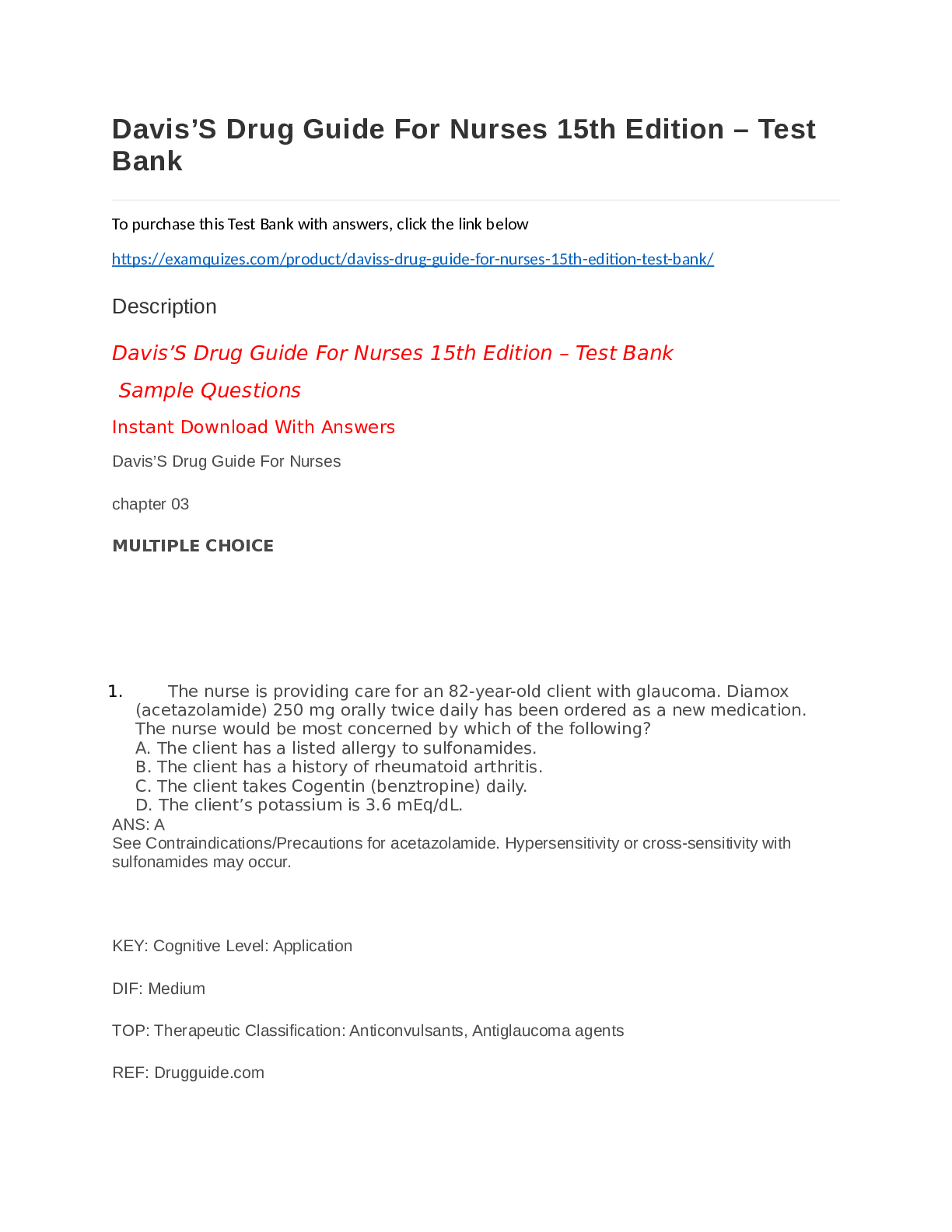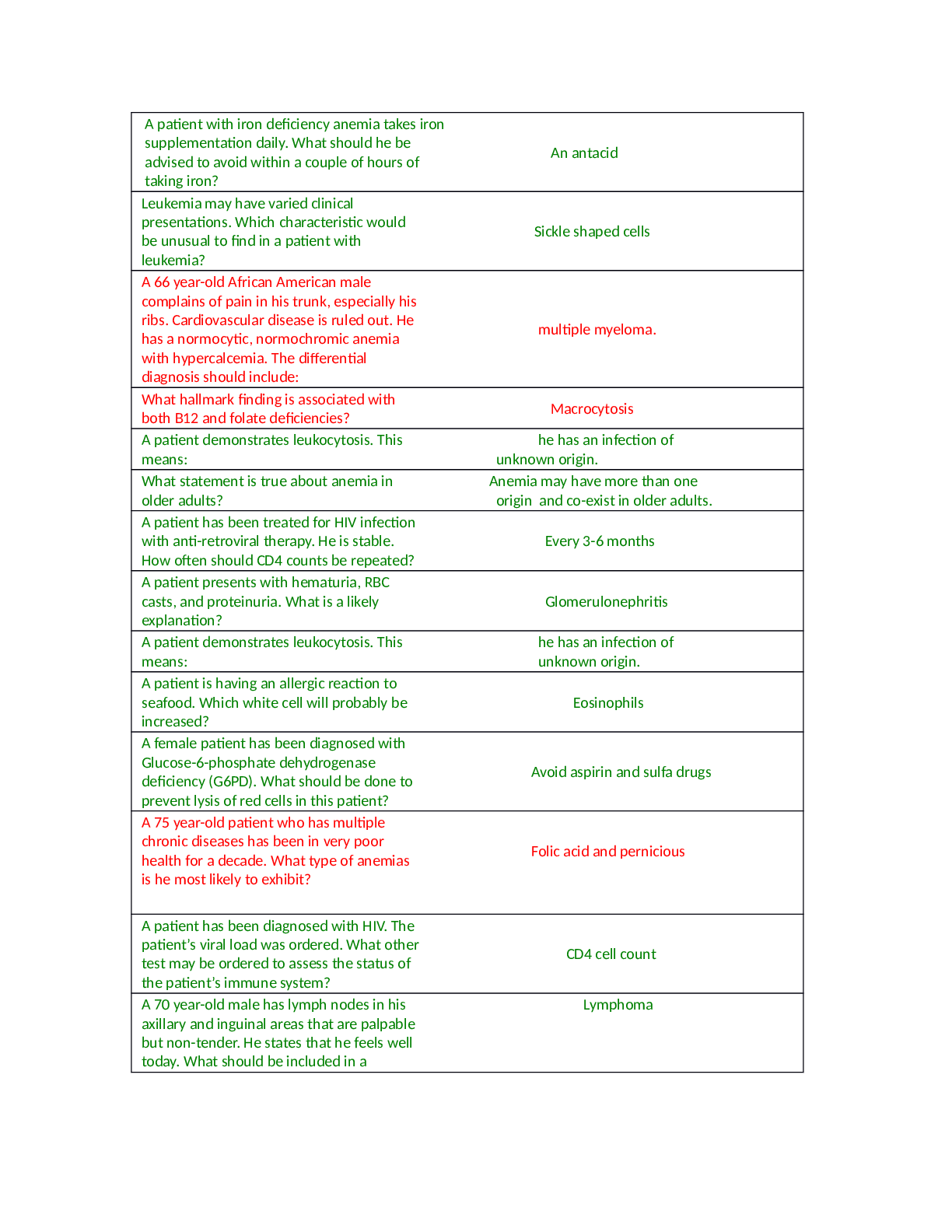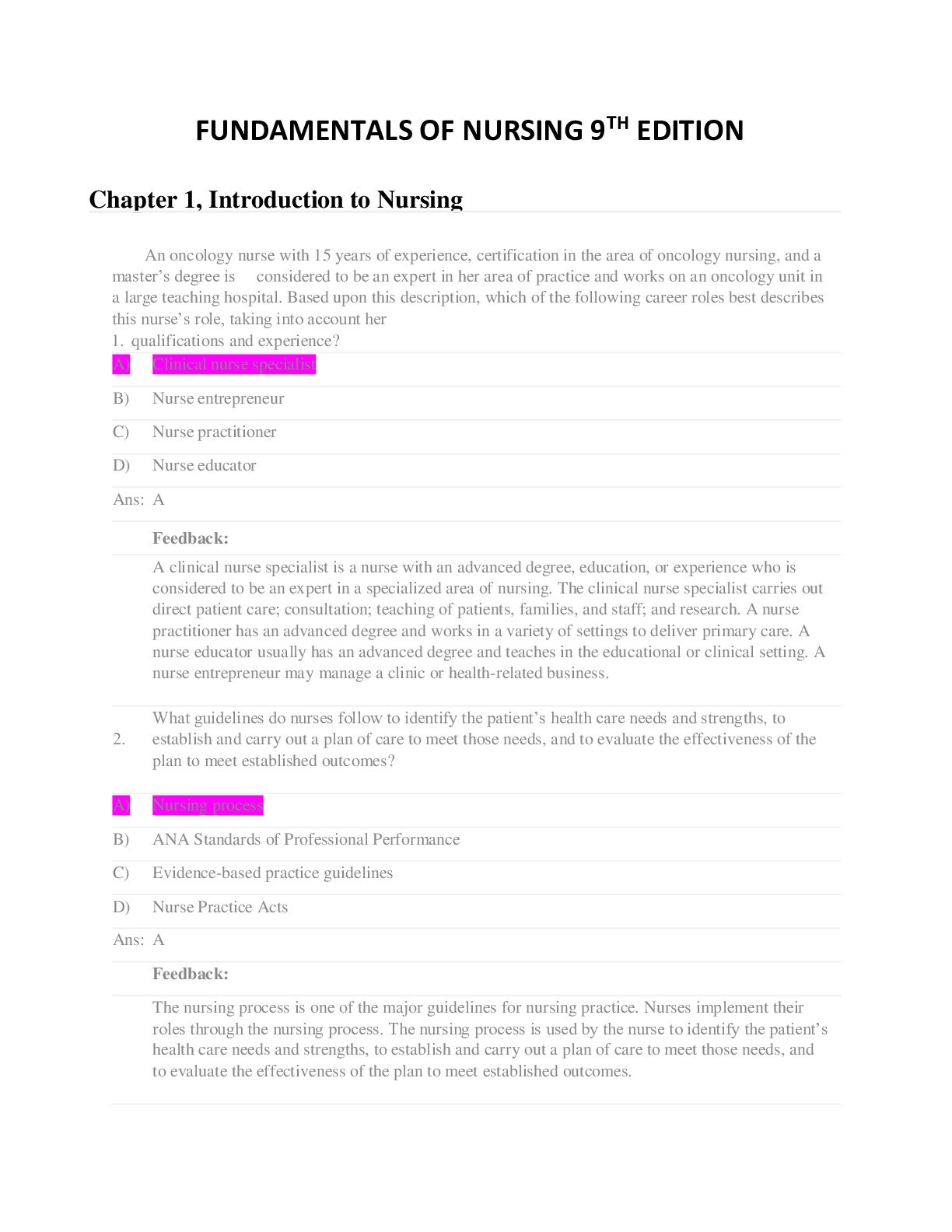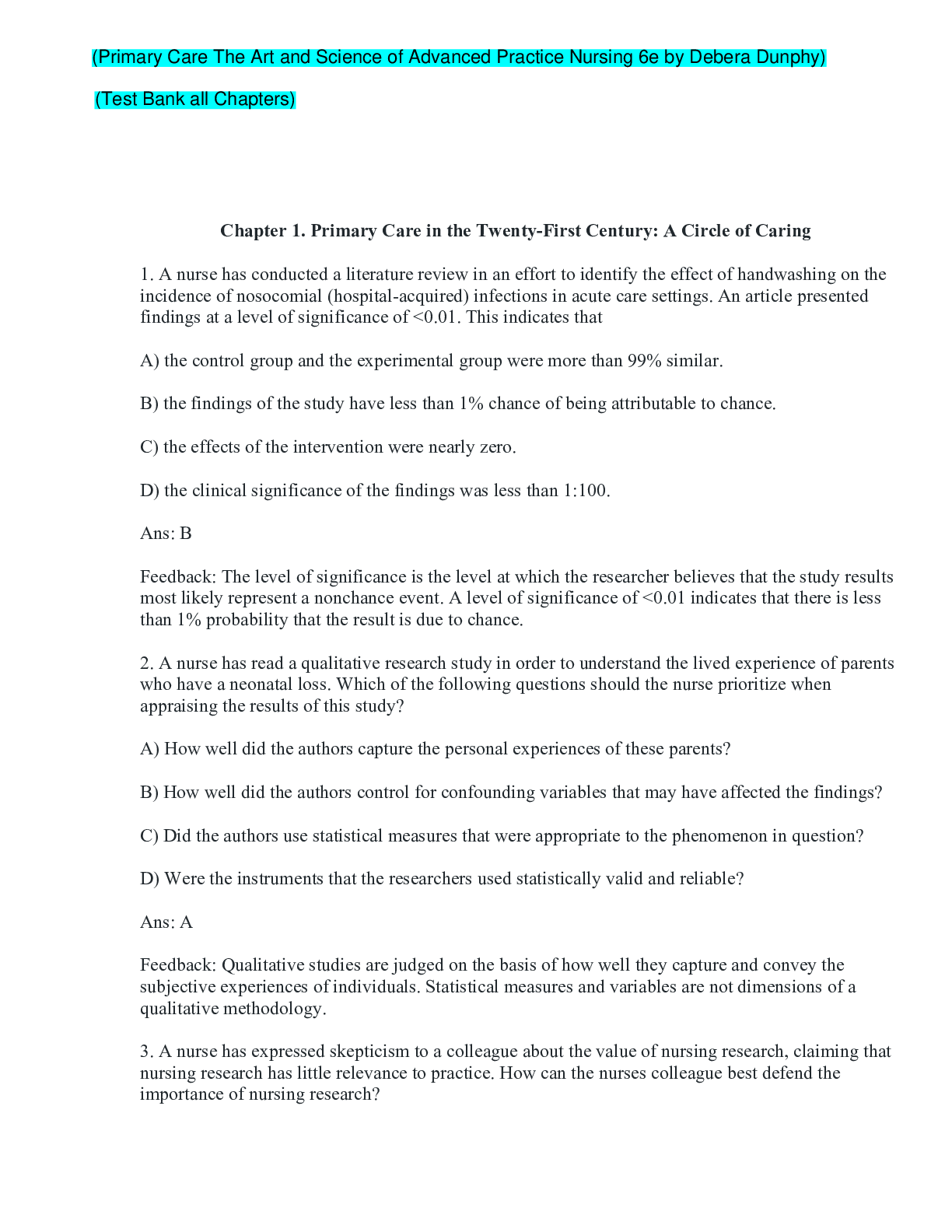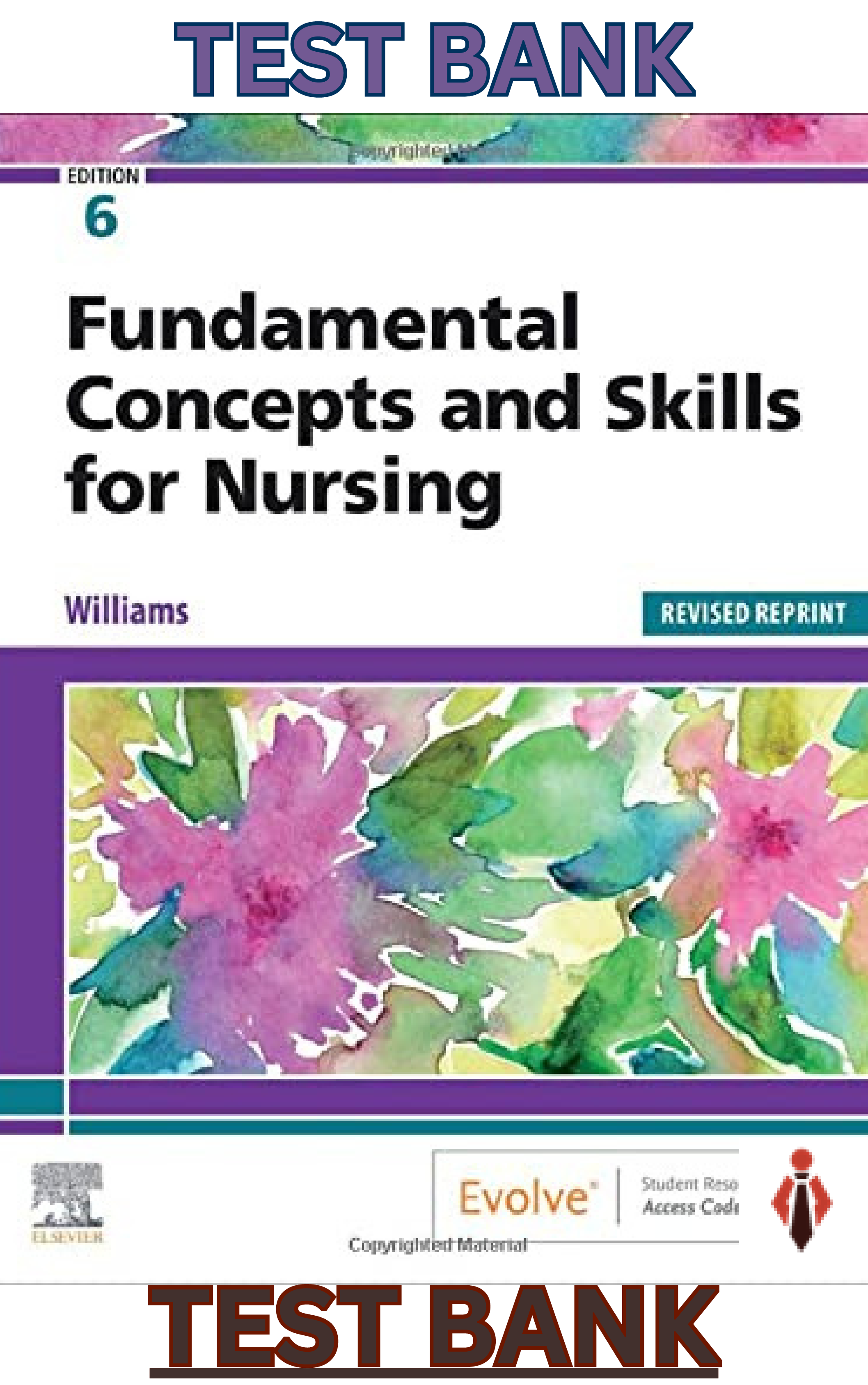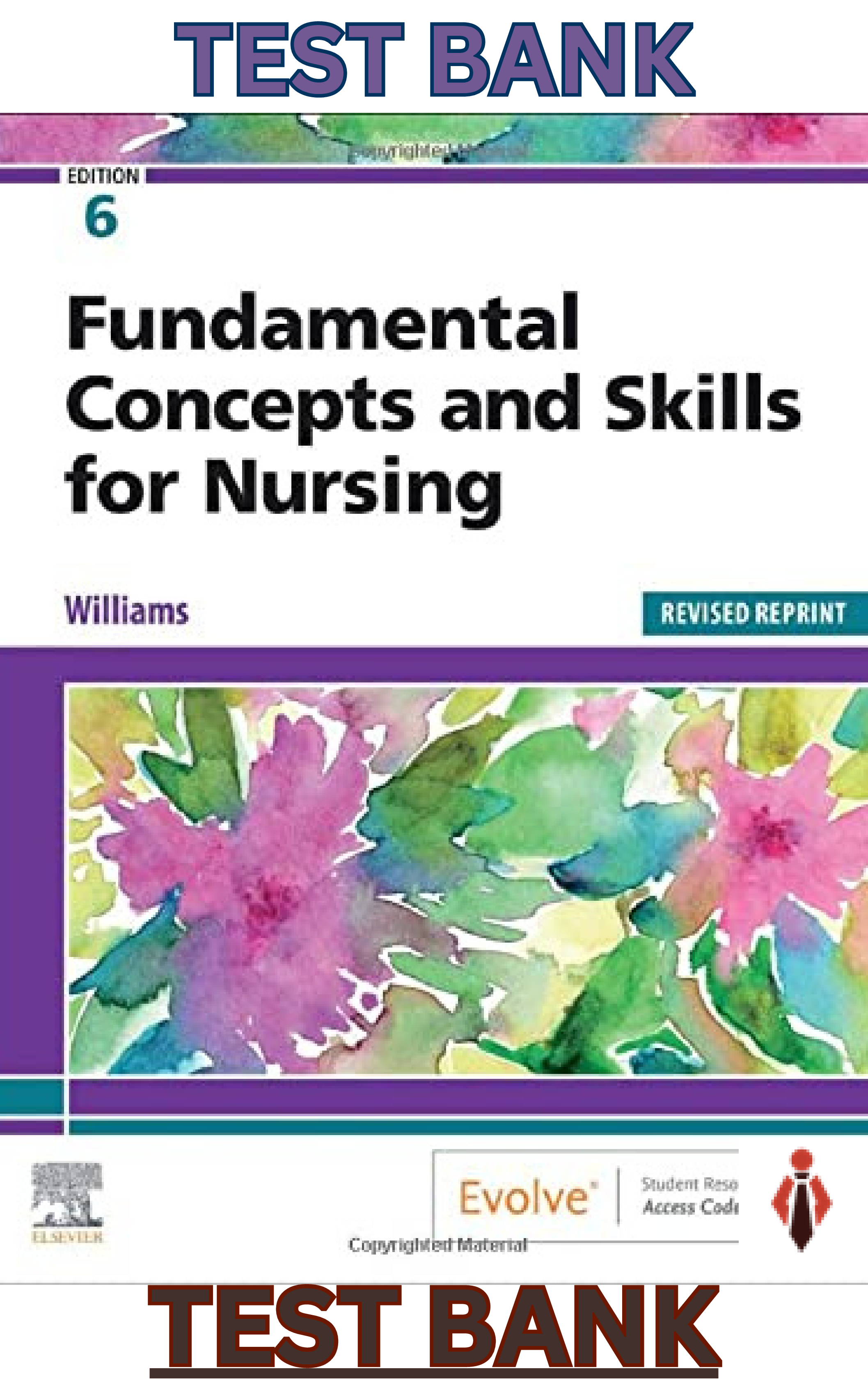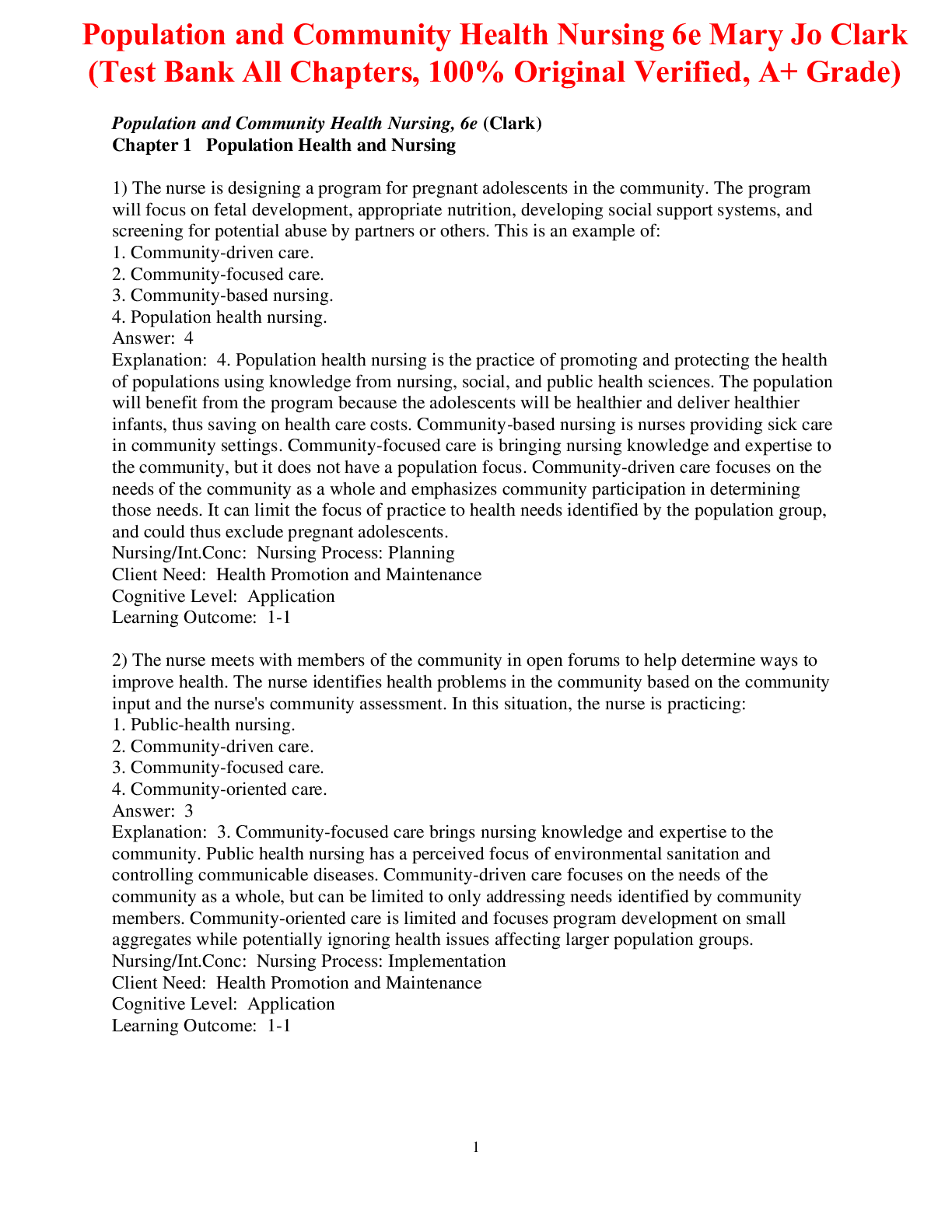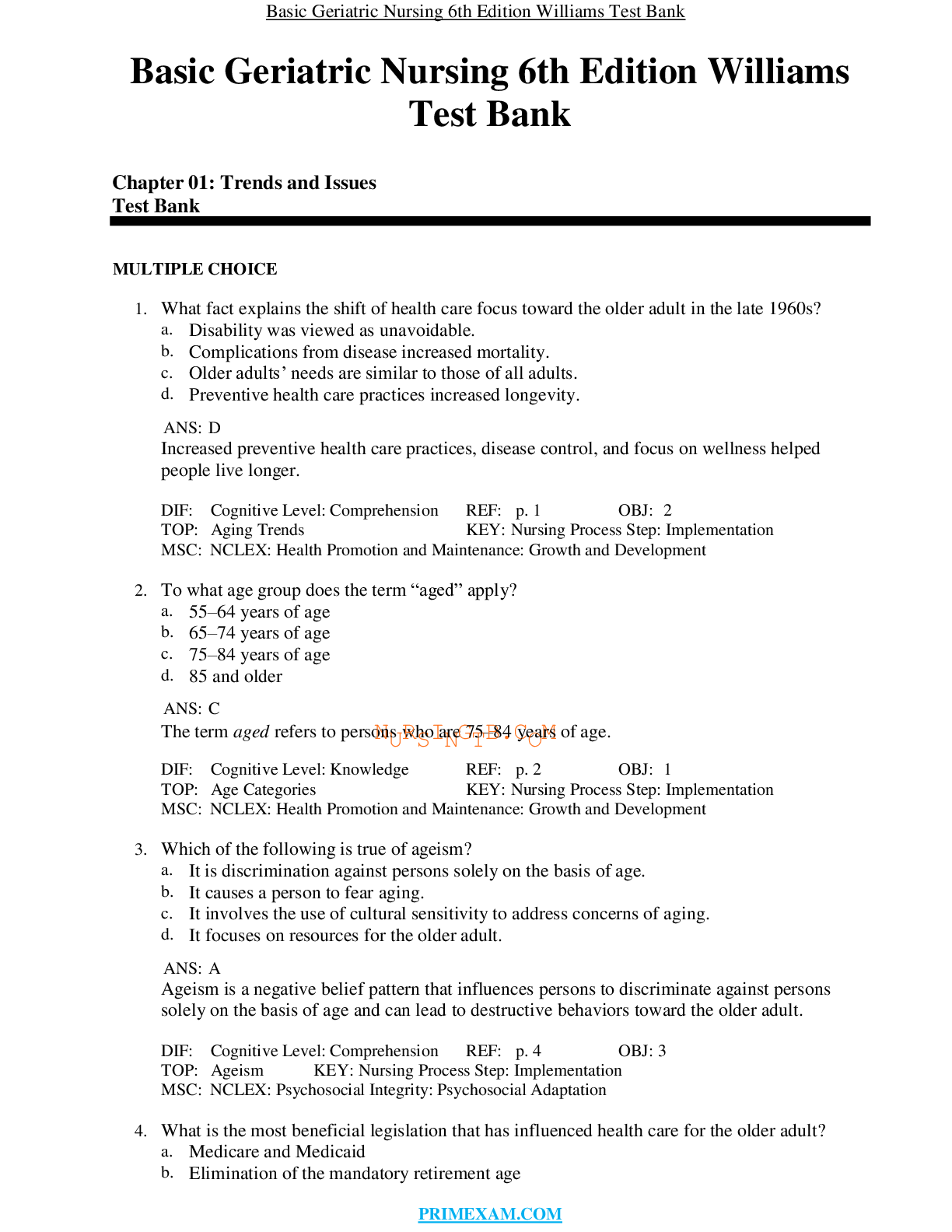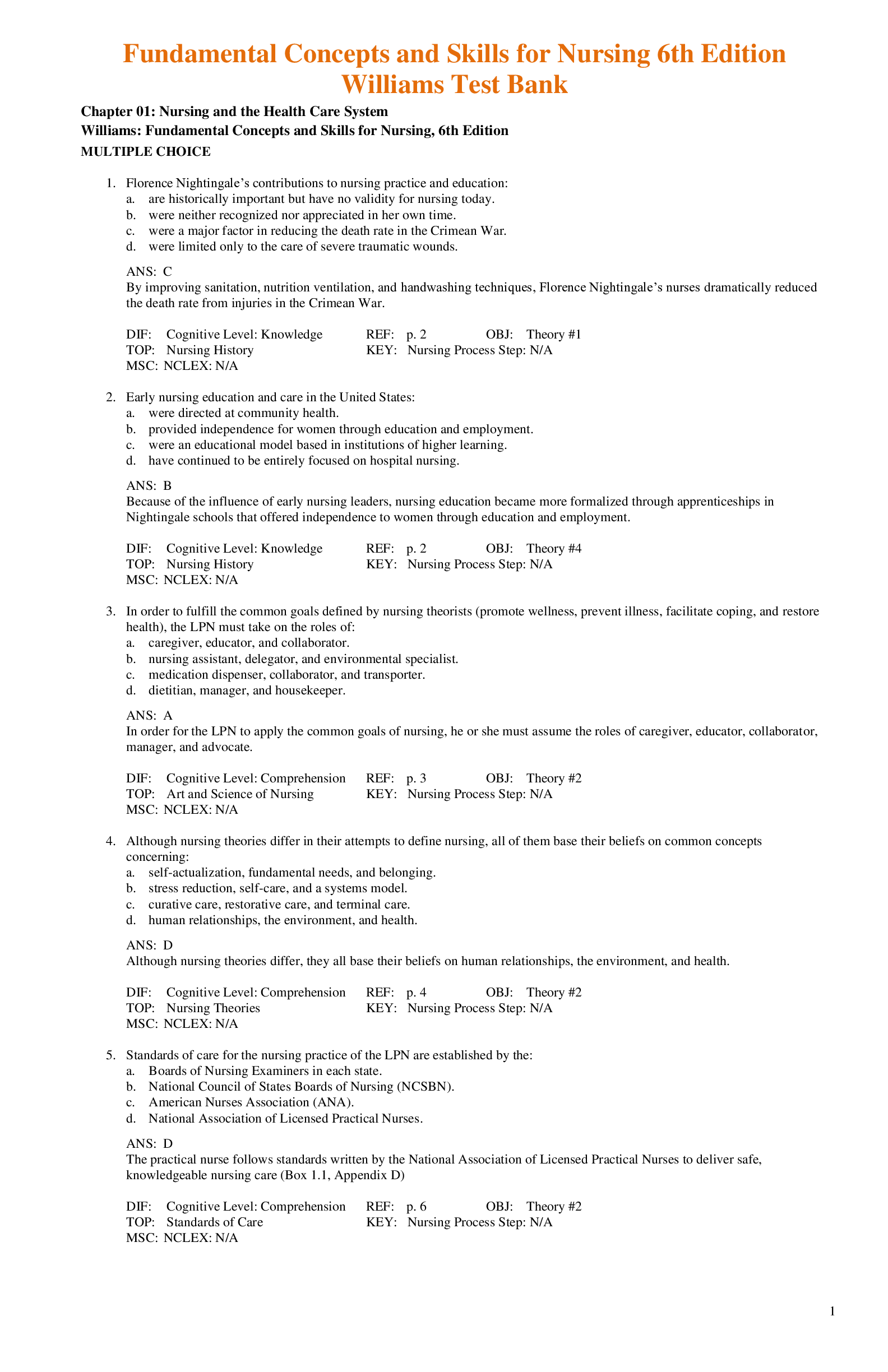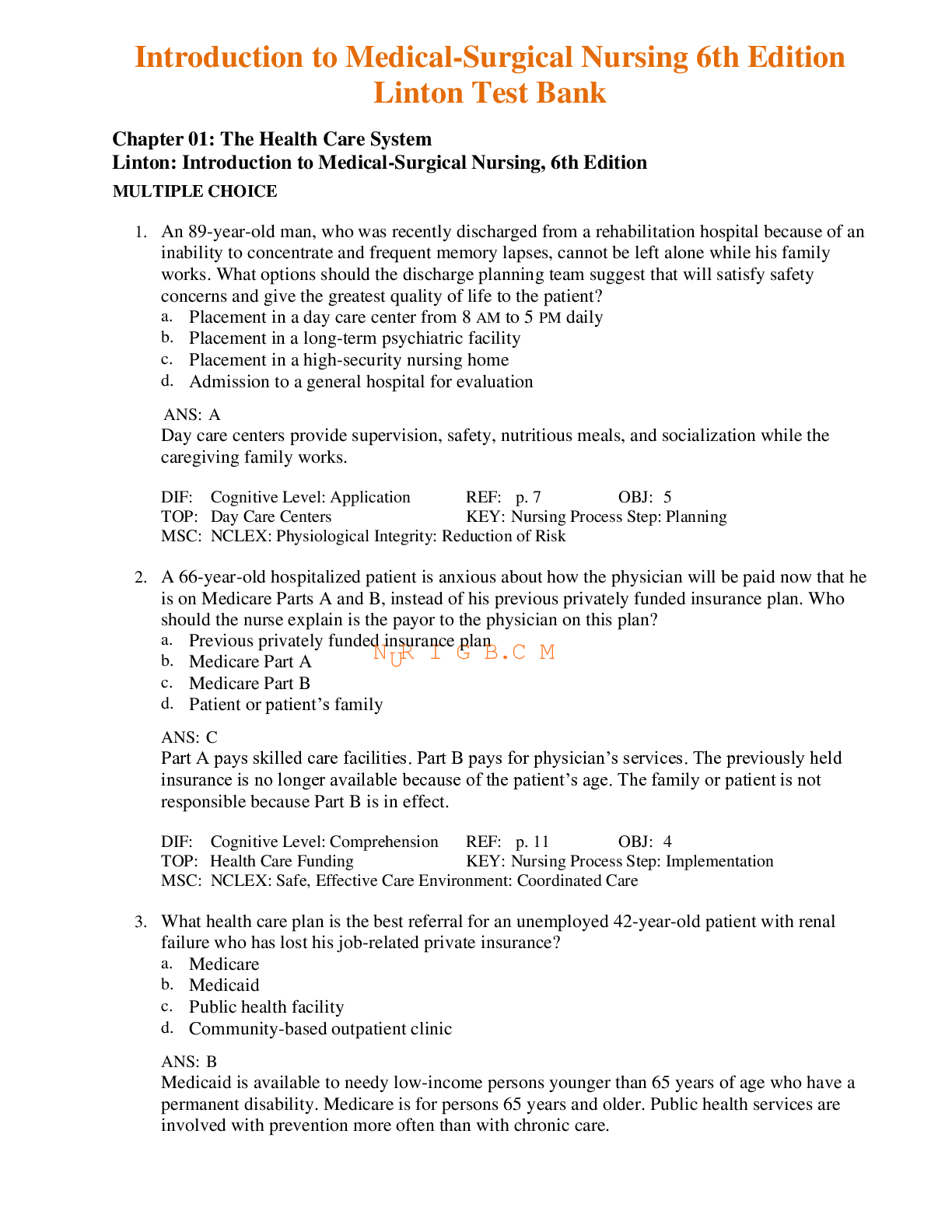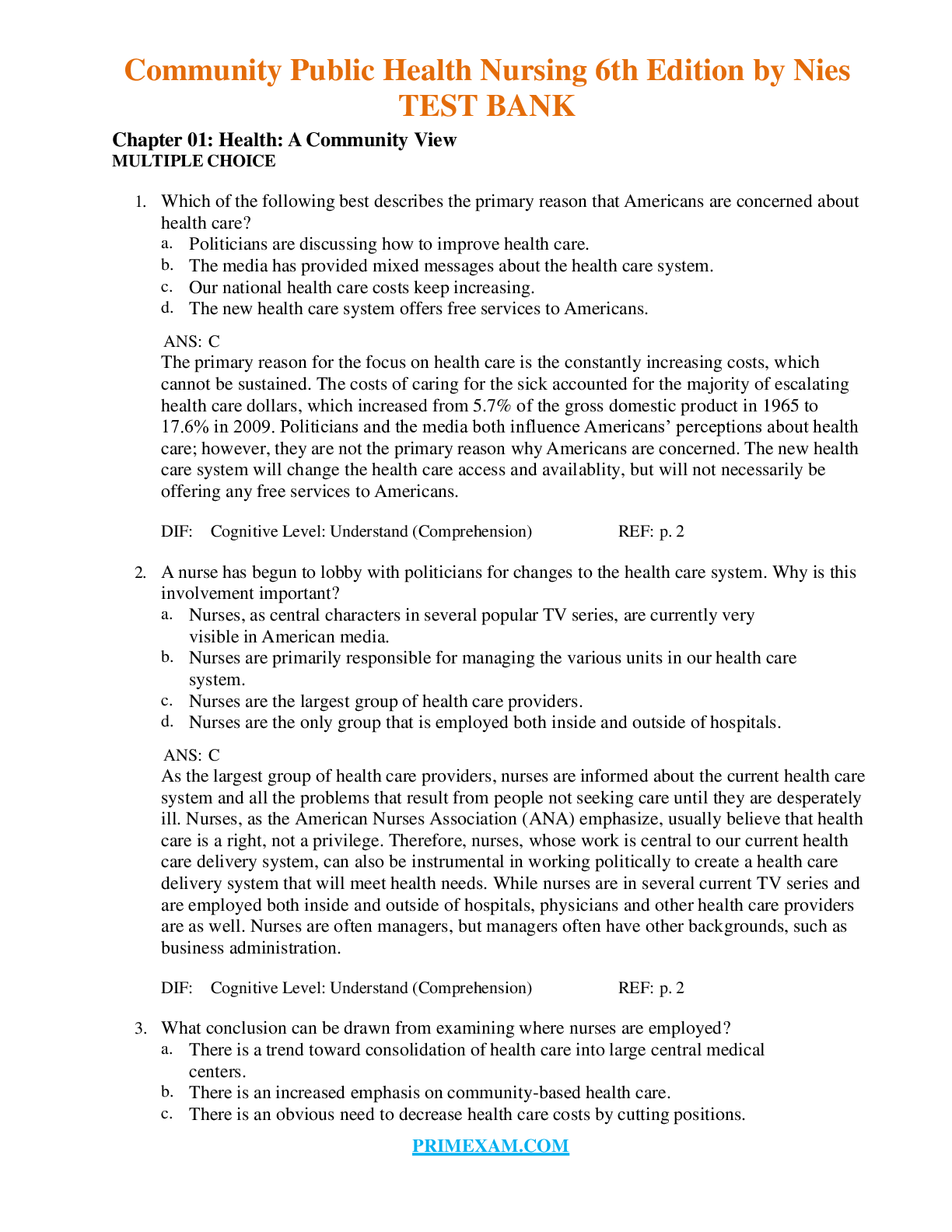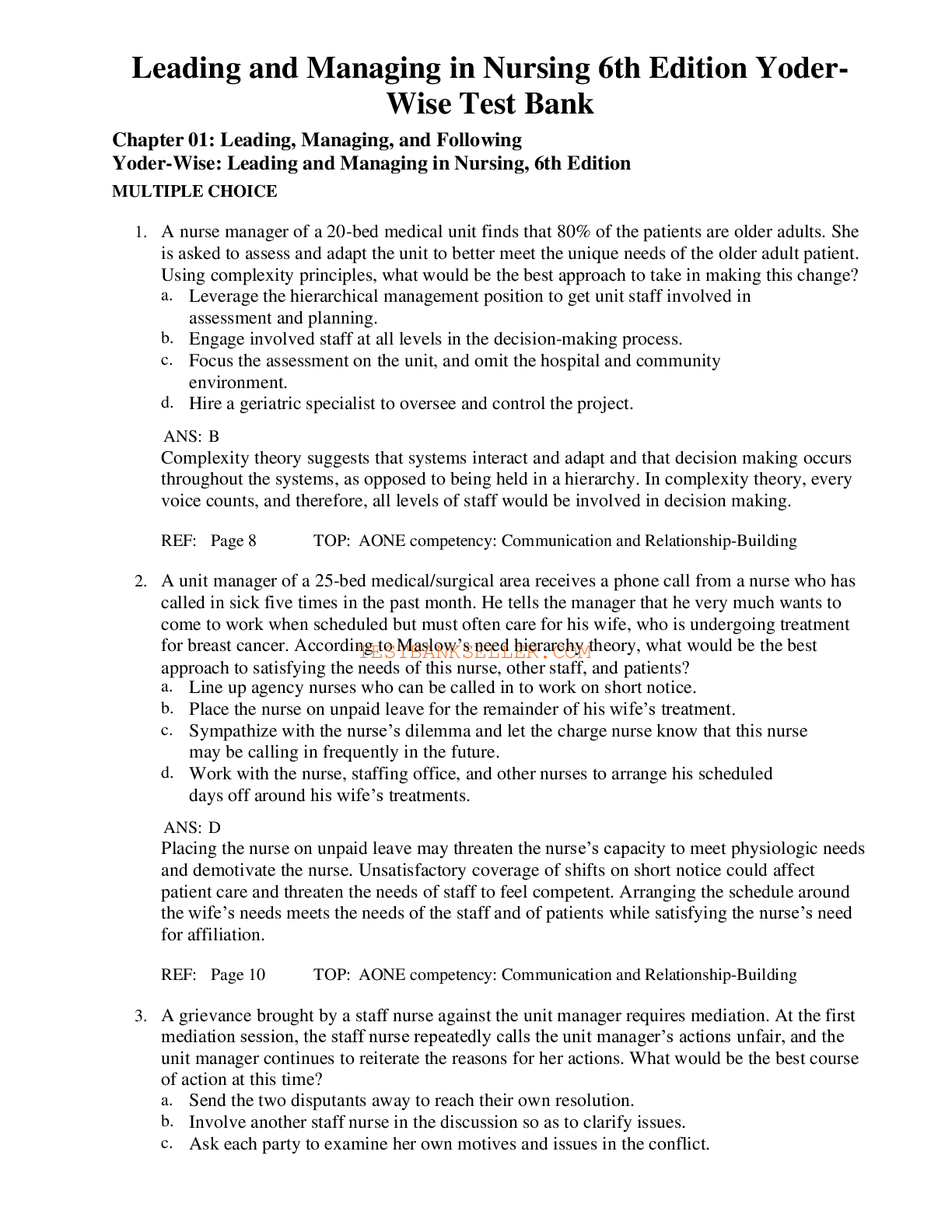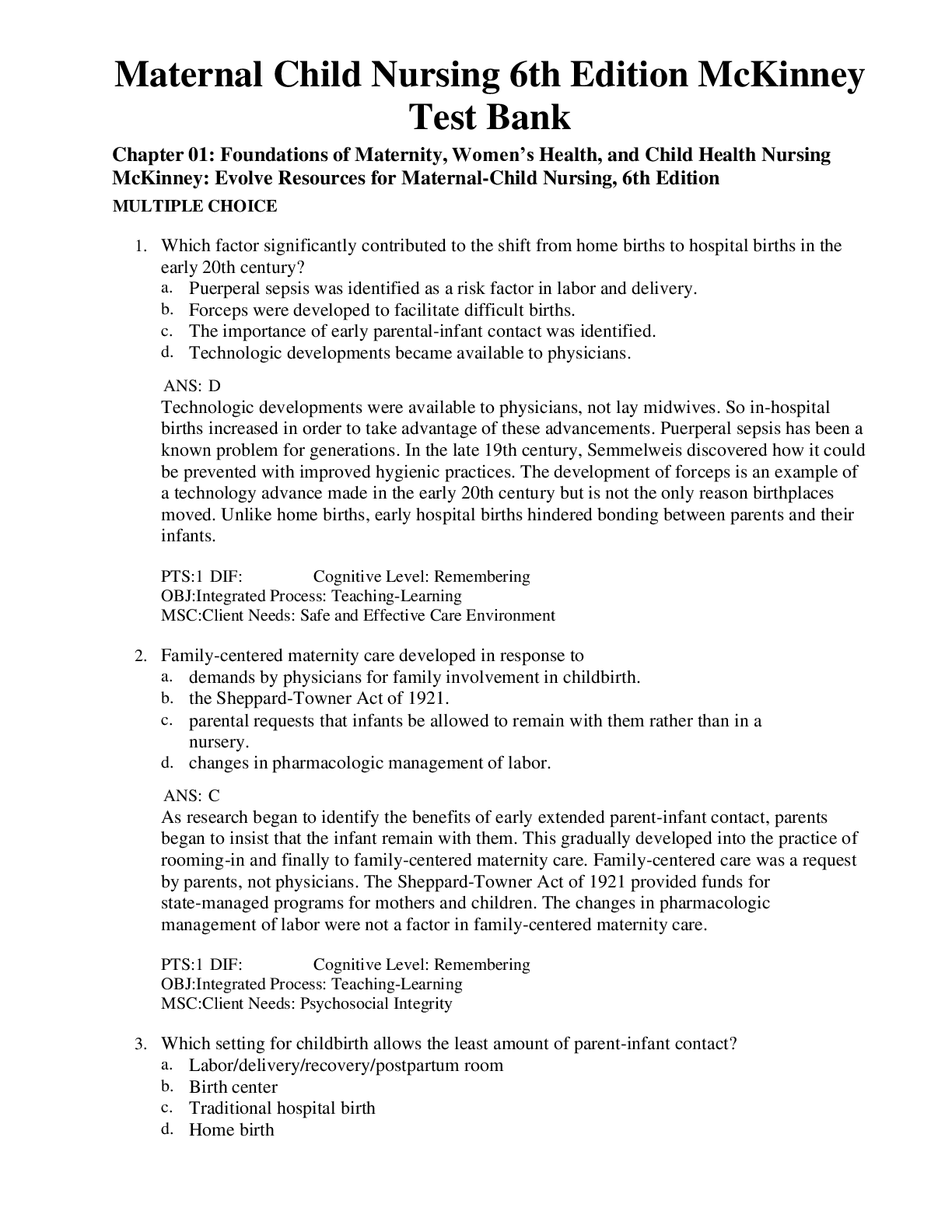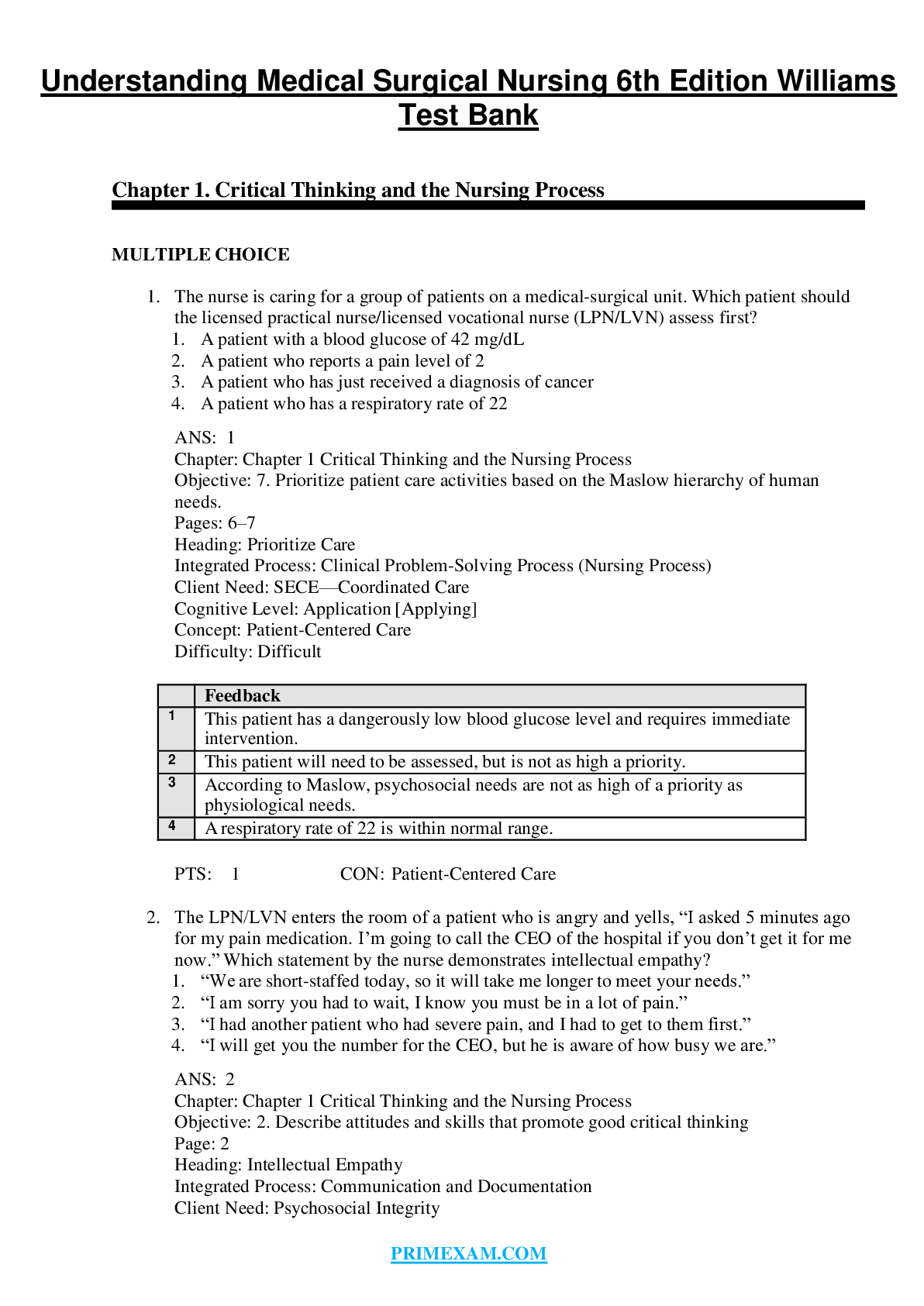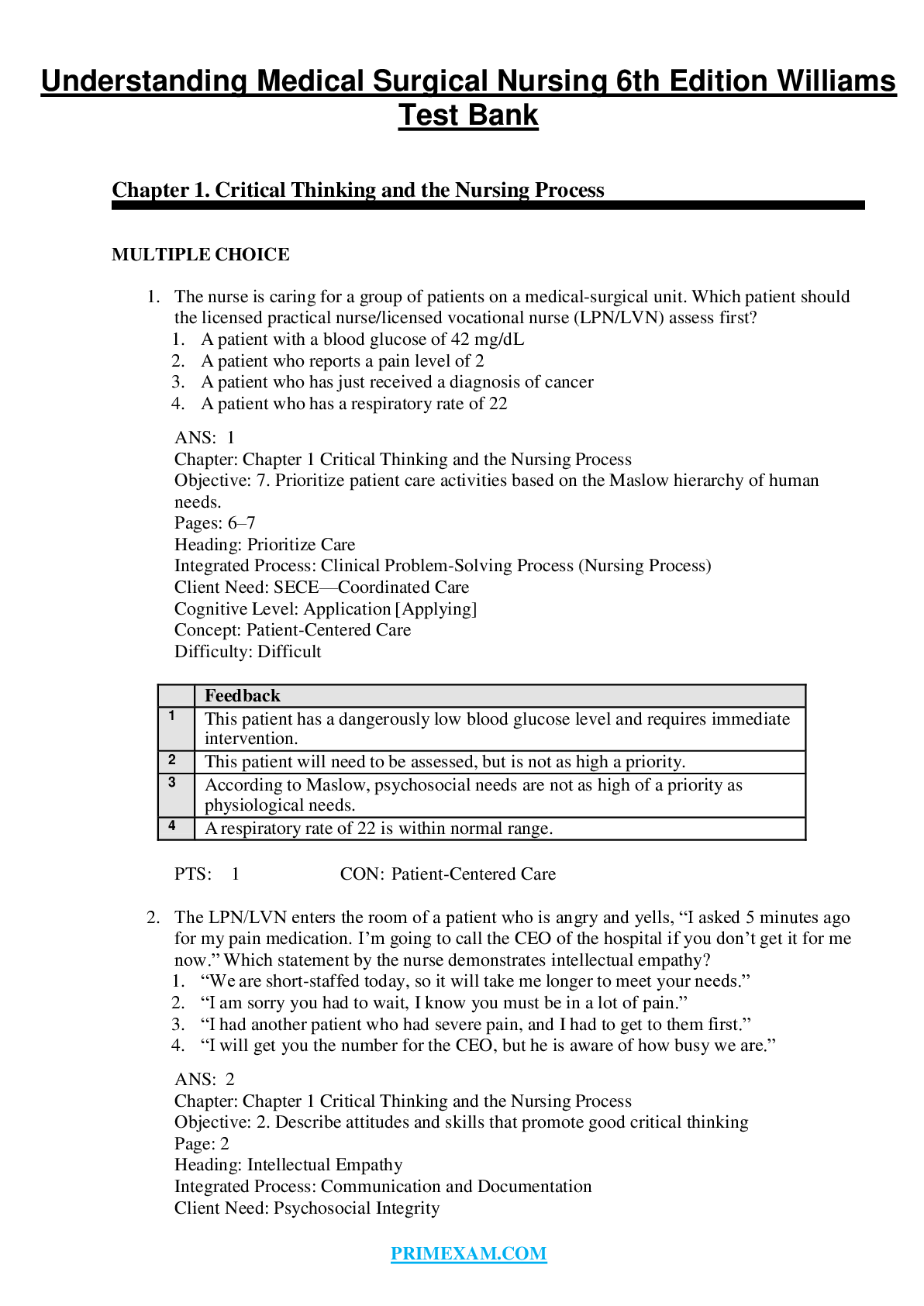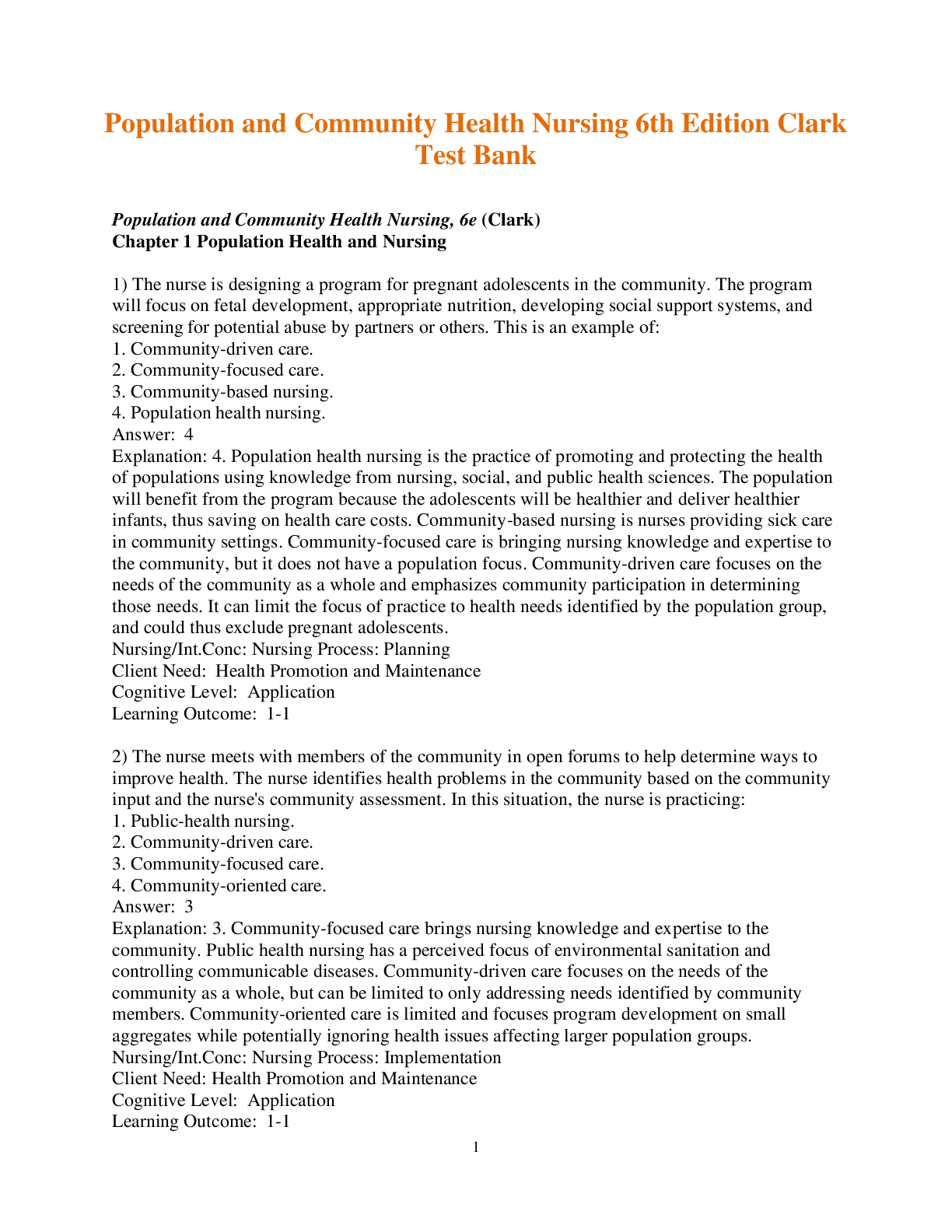*NURSING > TEST BANK > Strayer UniversityTEST/ BANK 13/Foundations Of Nursing 6th Edition by Barbara Lauritsen Christensen (All)
Strayer UniversityTEST/ BANK 13/Foundations Of Nursing 6th Edition by Barbara Lauritsen Christensen - Test Bank
Document Content and Description Below
MULTIPLE CHOICE 1. Although the patient denies pain, the nurse observes the patient breathing rapidly with clenched fists and facial grimacing. The nurse’s best response to these observations is: ... a. “I am glad you are feeling better and have no discomfort.” b. “Where do you hurt?” c. “What you are saying and what I am observing don’t seem to match.” d. “It makes me uncomfortable when you are not honest with me.” ANS: C The nonverbal communication should be clarified to prevent miscommunication. DIF: Cognitive Level: Analysis REF: Page 45 OBJ: 2 TOP: Communication KEY: Nursing Process Step: Assessment MSC: NCLEX: Physiological Integrity 2. The nurse considers the feelings and needs of a patient by stating, “I know you are concerned about your surgery tomorrow. How can I help you?” This type of communication is: a. intrusive. b. aggressive. c. closed. d. assertive. ANS: D Assertive communication takes a patient’s feelings and needs into account, yet honors the patient’s rights as an individual. DIF: Cognitive Level: Analysis REF: Page 39 OBJ: 4 TOP: Communication KEY: Nursing Process Step: Implementation MSC: NCLEX: Psychosocial Integrity 3. If the nurse aggressively says to a patient, “Why couldn’t you have asked me to give you your pain medication when I was in here earlier?” the patient is most likely to feel: a. angry. b. that his needs are met. c. humiliated and unworthy. d. that his request will be granted. ANS: C Aggressive communication is highly destructive. Although anger may eventually come, the patient most likely feels humiliated first. DIF: Cognitive Level: Application REF: Page 39 OBJ: 7 TOP: Communication KEY: Nursing Process Step: Assessment MSC: NCLEX: Psychosocial Integrity 4. Therapeutic communication: a. facilitates the formation of a positive nurse-patient relationship. b. manipulates the patient. c. assigns the patient a passive role. d. requires the patient to accept what the nurse says. [Show More]
Last updated: 1 year ago
Preview 1 out of 25 pages

Reviews( 0 )
Document information
Connected school, study & course
About the document
Uploaded On
Jun 12, 2021
Number of pages
25
Written in
Additional information
This document has been written for:
Uploaded
Jun 12, 2021
Downloads
0
Views
36

